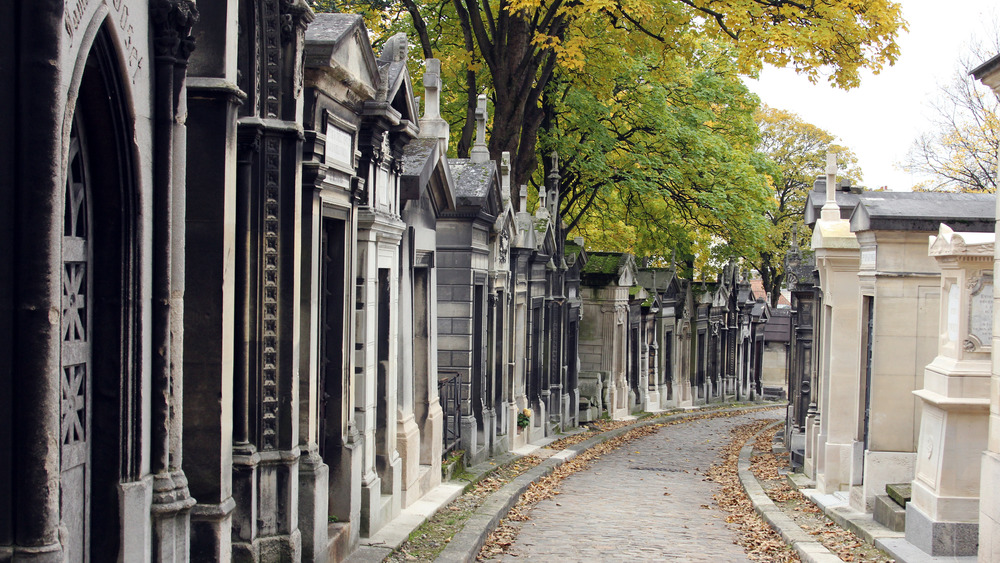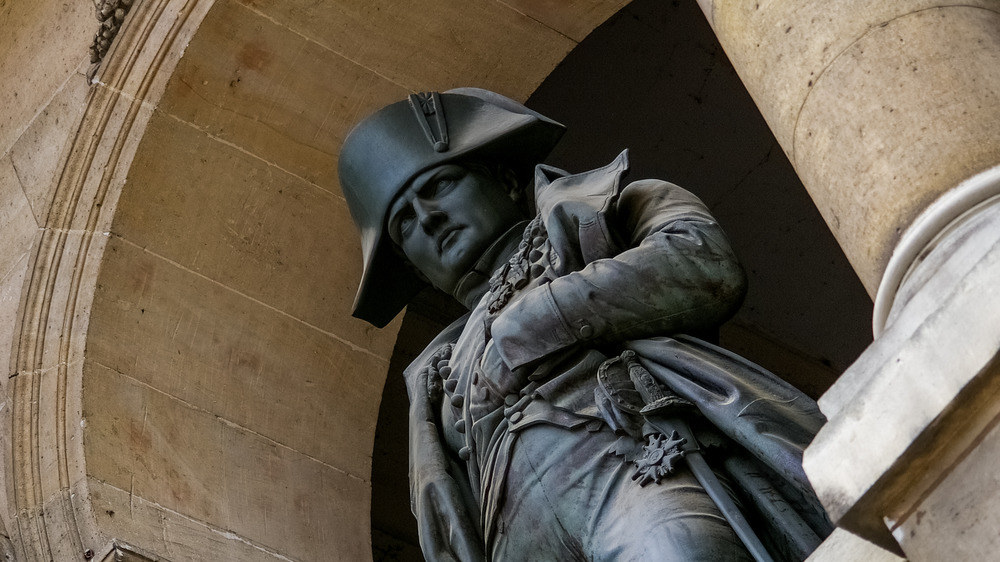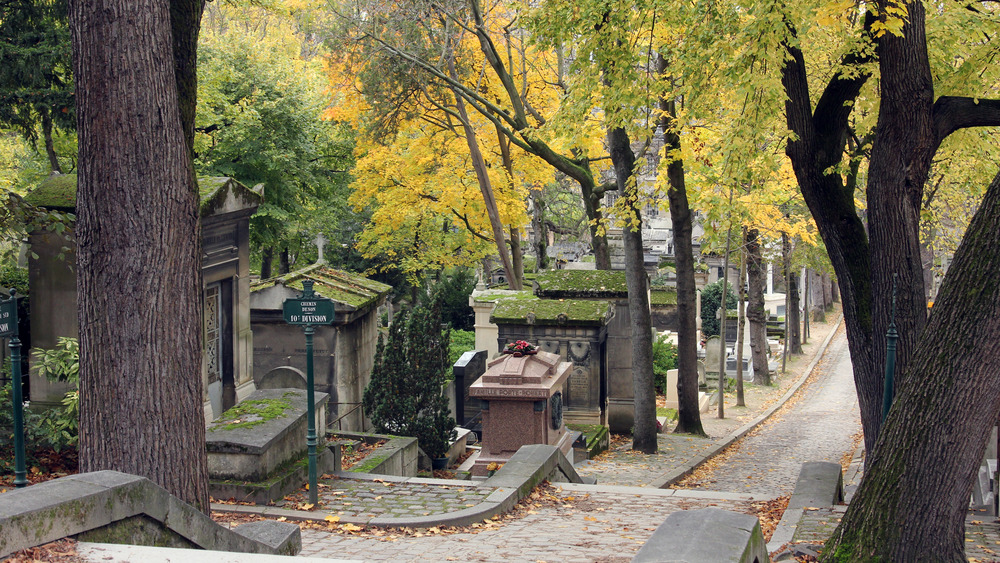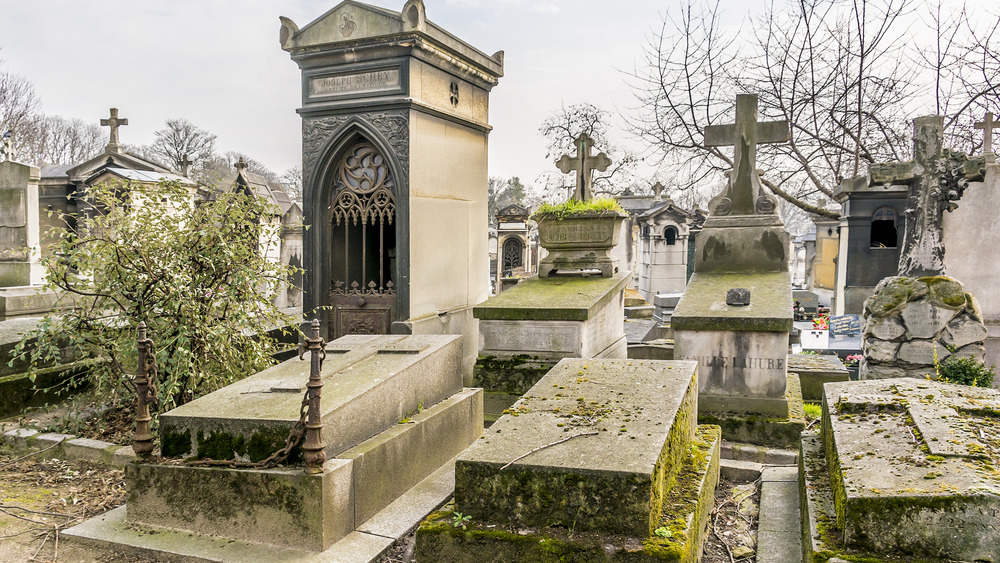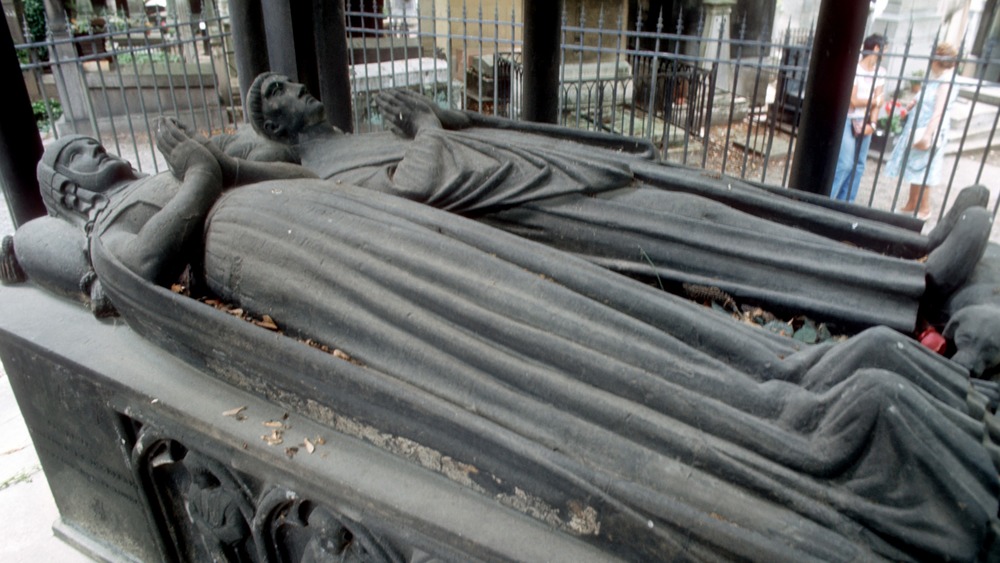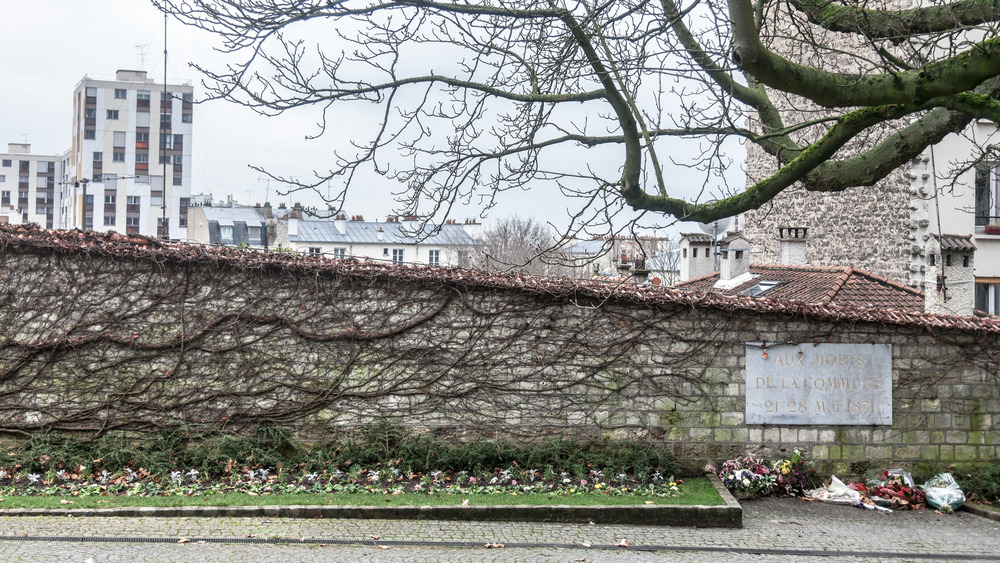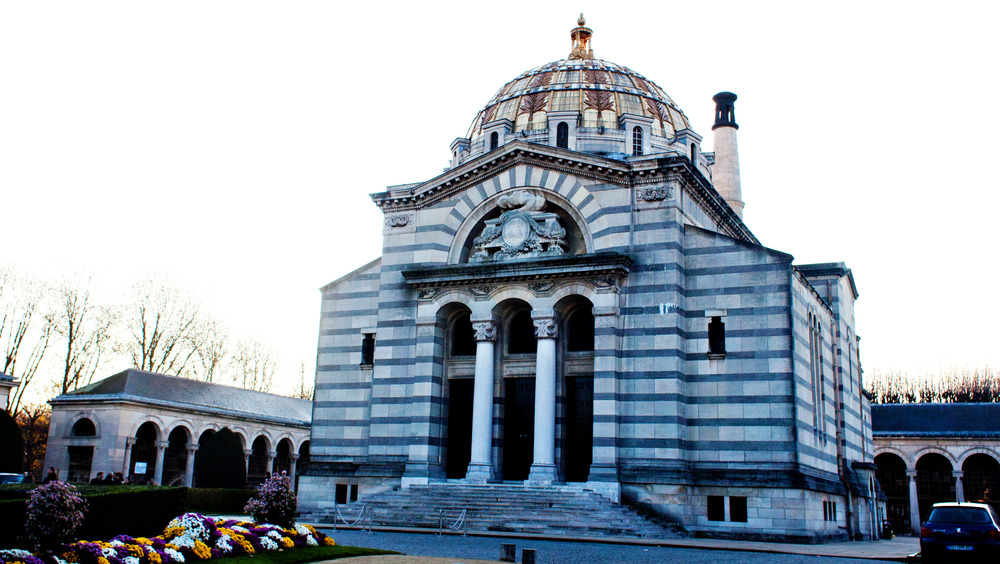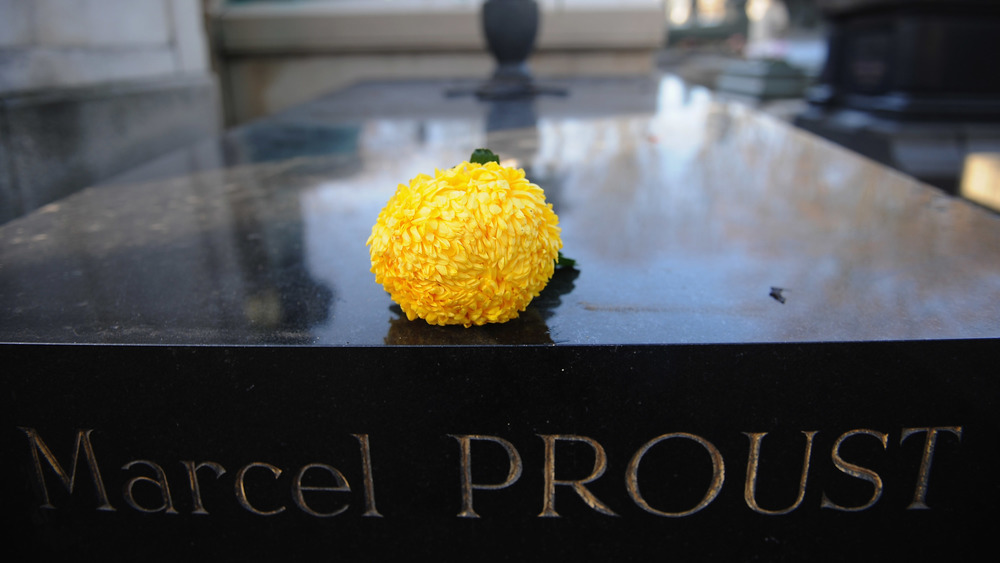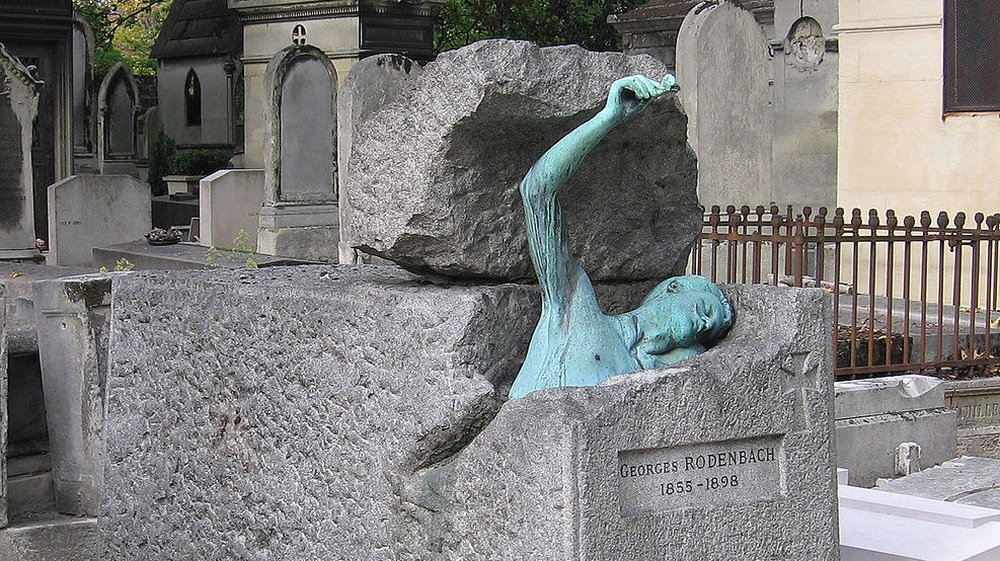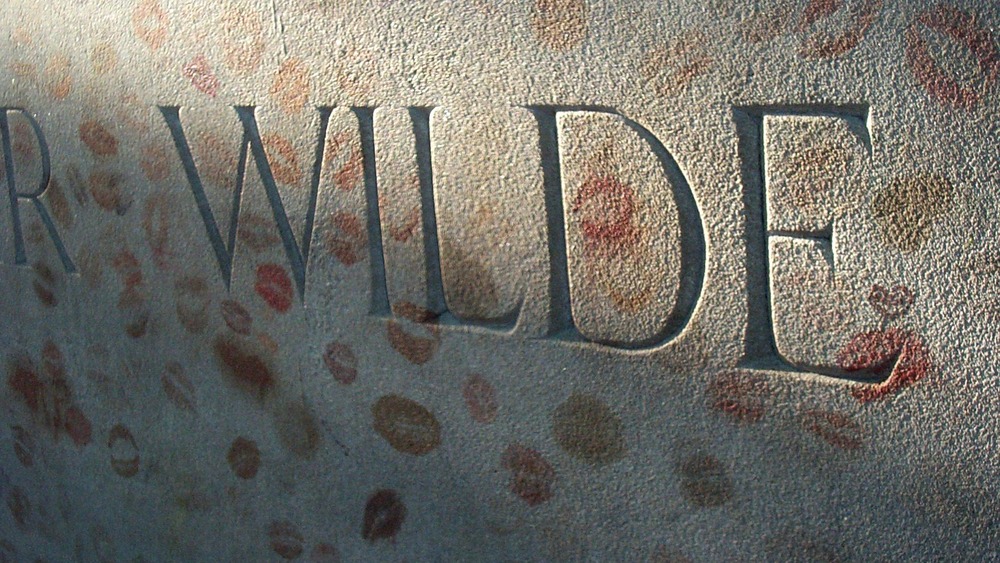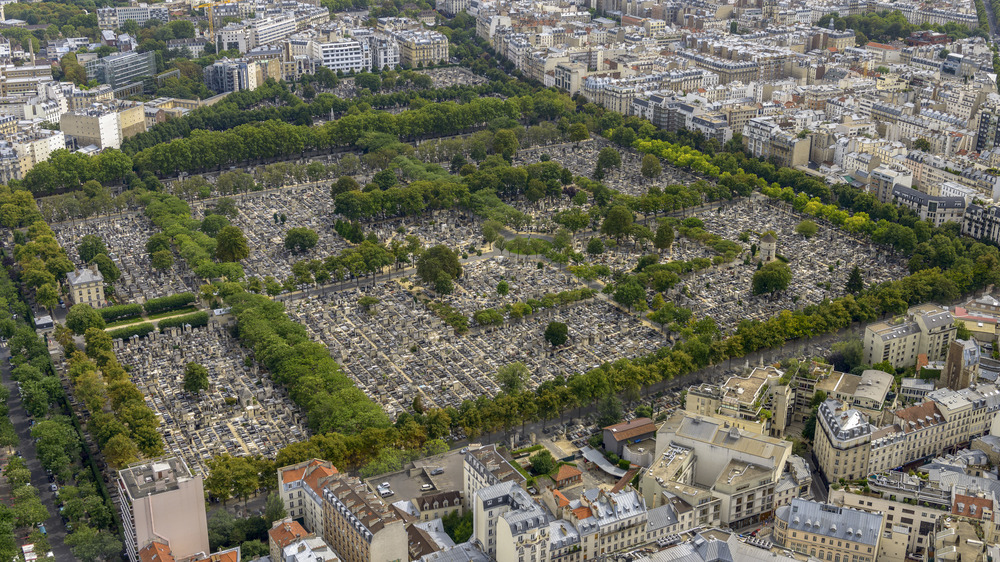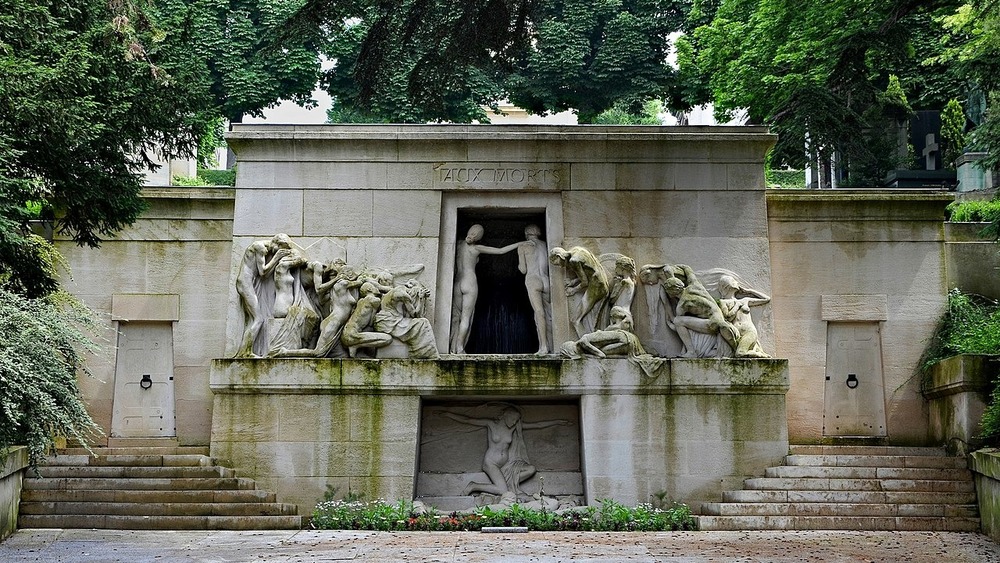The Untold Truth Of Pere Lachaise, The World's Most Visited Cemetery
If you never went through an emo phase, you might think it's weird that people like to visit cemeteries. And sure, some can be sad, uncared for, and small, but there are other cemeteries that are basically a combination art gallery and beautiful park.
Pere Lachaise in Paris might be the most stunning of them all. As the Encyclopedia Britannica notes, it's probably the most visited cemetery in the world (it's impossible to know for sure, since Pere Lachaise, like most cemeteries, doesn't actually count up the people who come there, but the superlative is generally accepted by people who know about these things.)
It's no wonder that even in a city with as many sights to see as Paris, so many are drawn to Pere Lachaise. For some, it's even a place of pilgrimage for fans of everyone from iconic rock stars to star crossed lovers to infamous writers. This is the untold truth of Père Lachaise, the world's most visited cemetery.
Creating Pere Lachaise was one of Napoleon's first acts
At the turn of the 19th century, Napoleon had wrestled control of France. He hadn't yet crowned himself emperor, but he was calling the shots, and according to City of Immortals, one of his main concerns was day-to-day living conditions for his subjects. In a place like Paris, this meant something had to be done about the conditions of the dead.
For hundreds of years, Christians in Paris (and most other places, for that matter) were buried in and around their churches. Many of these buildings had originally been on the outskirts of the city, but as the city grew, those villages became part of it, and so did those graves. With the population booming, eventually, there was a serious space issue. There wasn't room for both the living and the dead, so the dead had to go.
Napoleon issued a challenge to get some new cemeteries up and running outside of town. Four were planned, although in the end only three would be built. The only one that was completely original, according to Napoleon.org, was Pere Lachaise. It was named after the Sun King Louis XIV's personal confessor, the Jesuit priest Father François de la Chaise, who had lived on the land from 1665 to 1709. A competition was launched to design this new type of cemetery, drastically different from the church graveyards people were used to. The winner was architect Alexandre-Théodore Brongniart, who had an audacious idea.
Pere Lachaise was the world's first "garden cemetery"
Church graveyards were usually small, crowded, and with room for little more than small or standard-sized tombstones. They were old and crumbling and definitely evoked a macabre feel. Sure, that seems fine, because they have dead people in them. But the designer Alexandre-Théodore Brongniart decided his cemetery would be the complete opposite.
According to Napoleon.org, Brongniart's vision was for something beautiful, "in harmony with the Romantic aspirations of the epoch." The land, located on a hill, was not paved flat but allowed to stay rolling and natural. Trees and other natural vegetation stayed as well. To allow visitors to enjoy strolling through the wooded area, the graves were connected by wide paved walkways. If you ignored the tombstones everywhere, it would have been more like you were in a park than a graveyard. And that was the idea. City of Immortals notes that large sculptures unrelated to the graves were also purchased and spread about the grounds, giving it an open-air art gallery feel as well.
The design was a true revolution in death. Who wouldn't want to clean up their own city by moving the literally overflowing graveyards out of the city and get a gorgeous public space in the bargain? Within a few decades, the Victorians would combine their obsessions with death and the outdoors and build garden cemeteries of their own. It became a huge movement in both Europe and the United States, and designers looked to Pere Lachaise for their inspiration.
Pere Lachaise was originally secular, so anyone could be buried there
Another beautiful thing about Pere Lachaise Cemetery was the fact that from the beginning it was egalitarian, or at least more so than the church graveyards that had come before. To be buried in a church, you needed to be Christian, belong to that denomination, usually belong to the actual church, and be considered holy enough for their ground (people who died by suicide were excluded, for example).
But Napoleon was coming off the French Revolution, when many traditional things were being questioned, including religion. Come to Paris says Napoleon decreed, "every citizen has the right to be buried regardless of race or religion." (Except, you know, in French.) This meant the already revolutionary Pere Lachaise was about to be even more so.
Still, it wasn't the lovefest it might sound like. Religious conflicts run deep, and while non-Christians were buried in Pere Lachaise, for a long time they had their own sections, walled off from those who had followed what the majority of French people thought was the only right faith. Paris Cemeteries records a Jewish section was added in 1810, just six years after Pere Lachaise opened. It took until 1856 for a Muslim burial section to be added, but when it was, it included a mosque, which La Gazette Drouot says was the first Islamic religious building in modern France. In the 1880s, segregation in cemeteries was outlawed, and Pere Lachaise took down the dividing walls.
It took a PR stunt to make the cemetery popular
On May 21, 1804, a 5-year-old girl was the first person to be laid to rest in the brand-new Pere Lachaise Cemetery, according to Napoleon.org. Surely, she would soon be joined by thousands more. Who wouldn't want to spend their eternity among the trees on a hillside overlooking Paris?
It turned out, no one wanted that. A nondenominational cemetery? And so hilly? And it was too far outside of Paris. Why would you want to leave Paris, even in death?
This led to possibly the most morbid PR stunt in history. If people needed a reason to be buried in Pere Lachaise, the authorities would give them one. There were lots of dead people buried in other places, and some of them were famous. So they dug up notable people and moved their remains to Pere Lachaise. The Encyclopedia Britannica says this was done with "much fanfare," so everyone knew.
First Napoleon had Louise de Lorraine, queen consort of Henri III, reinterred there. But it still wasn't enough. So 1817 saw the relocation of the remains of the famous poet Jean de La Fontaine, the writer and actor Moliere, and — the biggest get of all — the tomb of Abelard and Heloise. If those names don't ring a bell, just know it's like getting the French Romeo and Juliet for your cemetery. Of course, people will want to be buried next to them. Pere Lachaise was suddenly the most desirable cemetery in France.
Pere Lachaise was the site of a massacre
In 1871, tensions were running high in France. The country had just lost a war against Prussia, and the people of Paris, always up for a bit of protest, decided they didn't like how the French government was essentially taking the loss out on them. The Encyclopedia Britannica says a group of left-wing French citizens formed the Commune of Paris, a new government reminiscent of the one that came out of the French Revolution, with goals like abolishing religion and limiting the workday to ten hours.
This revolution would not be as successful at the one 100 years before. According to Find A Grave, during the "Bloody Week" of May 21 to 28, the heavily outnumbered communards fought the French army — which had only just finished fighting the Prussians and was now used against its own citizens. But that's not where the atrocities ended.
Pere Lachaise became a battleground, but then it was all over. The Commune's rebellion failed, and many of the communards met their end in the cemetery where they made their last stand. On May 28, without even a show trial to pretend it was justice, 147 of the rebels were lined up against a wall in Pere Lachaise and shot, then dumped in a mass grave in the cemetery. Now known as the Communards' Wall, the spot became a symbol of their martyrdom, and the left-leaning political parties of France still hold demonstrations there to this day.
Pere Lachaise had the first crematorium in France
Cremation had long been controversial in the Western world. According to the Guardian, some of the Jacobins during the French Revolution tried to introduce cremation, performing the first one "of any sort" in France for a millennium in 1794. When Napoleon took over, he might have been liberal about cemetery design, but he wasn't about to legalize cremation. It wasn't until the Law of 15 in November 1887, "On the Freedom of Funerals," that cremation was technically allowed. The government was now fine with it. The Catholic church was not. Since most of France was Catholic, this meant cremation still remained unpopular.
That didn't stop Pere Lachaise from adding a monumental crematorium, beginning construction that same year. The Protestant faith gave cremation the thumbs up in 1888, which meant there were at least a few possible customers. The first cremation in the new building took place in 1889, and Discover Walks says it was incredibly controversial.
The Catholic church approved cremation in 1966, and now the crematory is super busy. It is considered a "prestigious site" (per its official website) with "state of the art technology" (per Waymarking), and was declared a national monument in 1995. If the deceased person wanted to stay at Pere Lachaise, the cremains are placed in the ossuary or spread on a back lawn. If not, they can be spread or stored elsewhere (although, fun fact, in France it's been illegal to keep cremains at home since 2008).
Pere Lachaise has dozens of dead famous residents
Pere Lachaise is just overflowing with dead celebrities (although thankfully not literally, because ew). While plenty of them are French, you can find the graves of famous people who were originally from all over the world there. It makes sense, considering the rich and famous have long been drawn to the City of Lights, and where you live, you will, by logical extension, also die.
The celebrity of Moliere and Abelard and Heloise was what popularized the cemetery in the first place, and the prominent corpses just kept coming. The two most famous residents of Pere Lachaise today are probably Jim Morrison and Oscar Wilde. But even with their outsized fame and notoriety, they are surrounded by other dead people who were just as well-known.
One French travel site has a very abridged list that still manages to include two dozen people. For the music lovers there's French songbird Édith Piaf and composer Frédéric Chopin. Fans of art might want to look for the graves of Amédéo Modigliani and Camille Pissarro. Wilde is far from the only writer represented, sharing space with the likes of Marcel Proust and Gertrude Stein (along with her partner Alice B. Toklas). Moliere will no doubt be thrilled to be headlining the graveyard with fellow thespian Sarah Bernhardt. There are even some quirkier names there, like the only mime you've ever heard of, Marcel Marceau, as well as the inventor of his namesake killing machine, Joseph-Ignace Guillotin.
Pere Lachaise has some really weird tombstones
When Pere Lachaise was first conceived, the plan was for all the gravestones to look the same, because this was shortly after the French Revolution and everyone was feeling egalitarian. But the idea was almost immediately rejected, according to Napoleon.org. And while this led to a beautiful mix of styles and some truly artistic memorials, it also meant people had the freedom to get weird.
Strange tombs of note include that of actor Fernand Arbelot. Paris Discovery Guide says a statue of Arbelot himself is laying across his grave, holding up in front of him ... well, it's a head. It's supposed to be a mask representing his wife, grieving over her dead husband as he stares back at her for eternity, but it just looks like he's holding a decapitated head.
Then there's the Carton family underground vault. It might not look weird, but according to The Earful Tower, it's quite crowded. The vault can hold 60 people, and only nine spots are left for any family members who are interested in a reunion. Baroness Elizaveta Alexandrovna Stroganova is all on her own, but still needed a massive tomb, numerous stories tall and bigger than some houses. Philanthropist couple Christiane and Jean Nitzel are buried under a surrealist sculpture of a torso that is cracking at the thighs and exploding at the chest. And poet Georges Rodenbach seems to be climbing out of his grave, as if he can rejoin the living (pictured).
Strange rituals take place at some graves in Pere Lachaise
Because death and funerals are so tied with traditional and ritualistic ways of mourning, it's not surprising that gravesites become a place for people to act out their grief. This usually involves just laying some flowers, but sometimes fans of famous people take this much further. And since there are so many dead famous people in Pere Lachaise, there are plenty of weird graveside rituals to get confused about.
Visitors to Jim Morrison's grave seem to think they need to leave behind everything from beer bottles to condoms to underwear, plus lots of graffiti, which has to be cleaned off annually, says To Die For. Still, that's probably exactly what the hard partying Morrison would have wanted. Oscar Wilde's grave ritual is less directly connected to him. The Guardian says a couple decades ago visitors started killing his giant, sculptural tombstone, covering it with lipstick marks. Repeated cleanings were necessary, and the stone started to get damaged. Finally, a protective screen was added to stop the destructive lovefest.
By far the weirdest ritual takes place at the grave of someone far less famous. The journalist Victor Noir was killed in a duel in 1870, according to Atlas Obscura, and a beautiful bronze effigy of his body laying out, as if asleep or dead, covers his tomb. Now, for some reason, visitors rub the bulge in the statue's crotch, making it much shinier than the rest of his body.
It's almost impossible to be buried in Pere Lachaise today
Pere Lachaise was a great solution for the issues of its time, namely full to bursting cemeteries right in the middle of cities. Which might make you think ... over 200 years later, doesn't that describe the cemetery to a T? Yup. And once again, it's a big problem.
If you want to join the great and the good in this beautiful location when you die, you'll need to be both rich and lucky. According to the Guardian, the graveyards of Paris are "saturated." As of 2018, only about 150 plots a year in the city total — with very few in Pere Lachaise itself — are available for the 5,000 people who request one annually. If you do manage to jump up the list somehow, expect to pay around $20,000 just for your tiny piece of land, not including your coffin, tombstone, or anything else.
And if you have the money and the luck and the connections and somehow you do get your place in Pere Lachaise, don't get comfortable. You can't actually buy graves there anymore. You rent. In the old days, people could make sure to rest in perpetuity. You? Death in Paris says all that money and luck will get you is a five-year lease. After that, your remains are removed from the grave you paid a pretty penny for and put in the ossuary, aka the place where bones go. Meanwhile, your grave is rented out to the next person.
If you are buried somewhere else, you might still end up in Pere Lachaise
If you think the popularity and overcrowding at Pere Lachaise cemetery means you don't have a chance, there is hope. If you're buried elsewhere in Paris, your bones have a chance of ending up in the Pere Lachaise ossuary.
An ossuary is a building for storing bones, once the more decomposable stuff is gone. It's a convenient way to free up space. After your lease is up in any Parisian graveyard, or your tomb falls into disrepair, the mayor will have you exhumed, boxed, labeled, and brought to the ossuary in Pere Lachaise, according to Paris Cemeteries. Sure, you won't have the same personal space as in a grave or tomb, but the ossuary is located behind a beautiful memorial called the Monument aux Morts. Culture Trip says it was built to honor the unidentified dead of Paris, whose bones are also put in the ossuary.
But it's still too crowded. Turns out the ossuary now holds the bones of an estimated 1 million people. So what did they do? They started cremating some of the bones. But the ossuary already holds about 1 million people's cremains. With the estimated 1 million burials in the rest of the cemetery, that's 3 million people. Atlas Obscura says that's not even counting the cremains that have been spread on a small lawn. So you see, if you die in Paris, you might end up in Pere Lachaise one way or another.
